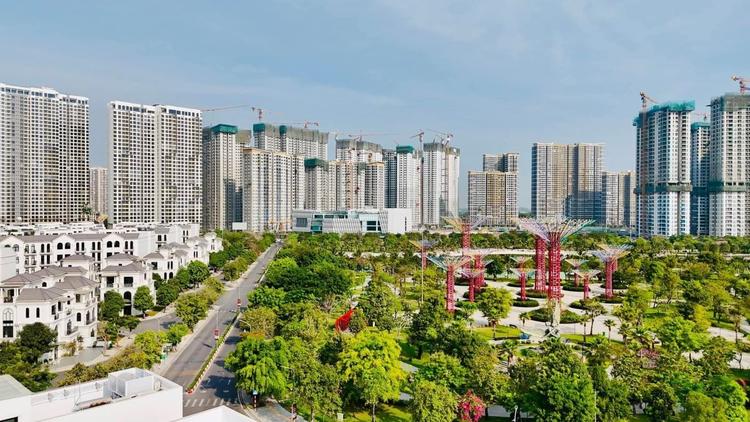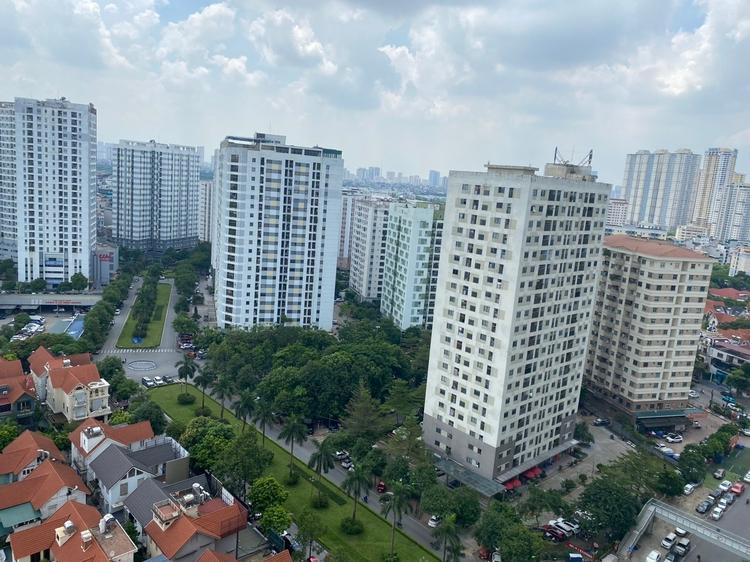In the second half of 2025 and the period of 2026-2027, tens of thousands of apartments will enter the Hanoi market, mainly in the mid- and high-end segments. However, selling prices are unlikely to decrease as land and infrastructure costs continue to rise. Experts say that instead of a “downward wave” across the market, there will be clear differentiation between regions and project quality. The key to cooling prices lies in policy reform and increasing the supply of social housing.
House Prices in the Coming Time: No Downtrend in the Whole Market
According to Ms. Do Thu Hang, Senior Director, Research & Consulting Department, Savills Hanoi, in the last 6 months of 2025, Hanoi is expected to welcome about 11,500 new apartments to the market. However, most of this supply is concentrated in the mid-high-end segment, causing an imbalance in the product picture. The affordable segment, which meets the real housing demand of the majority, continues to be scarce.
Notably, from 2026 onwards, the context will change significantly when many projects complete legal procedures and officially open for sale. It is forecasted that in the period of 2026-2027, the Hanoi market will add about 46,000 apartments, most of which are located in suburban areas. This is a number considered a “record” in recent years.

However, large supply does not mean pressure to reduce prices across the board. According to Ms. Hang, price adjustments – if any – will only appear in areas with abundant land funds and infrastructure that has not kept up. On the contrary, in key traffic axes such as Ring Road 2 and Ring Road 3, especially with projects developed by reputable investors, selling prices are unlikely to go down. Scarcity of land funds and high real demand will keep prices stable, or even increase slightly. The market picture in the coming time is not a scenario of comprehensive price reduction, but a clear stratification: projects in strategic locations continue to maintain prices or increase slightly, while products in remote areas may face adjustment pressure.
From another perspective, Mr. Nguyen Van Dinh – Chairman of the Vietnam Real Estate Brokers Association – said that apartments will still be the main source of supply in the coming time, with the largest proportion belonging to the high-end and luxury segments. This is the reason why the market continues to fall into a state of “phase difference” between supply and demand: while real demand focuses mainly on affordable products, the supply is biased towards the high-priced segment.
The core reason lies in project development costs. Land use fees account for the largest proportion of the cost structure and are continuously increasing. Along with that, infrastructure and utility investment costs are increasingly high, making it difficult for primary prices to decrease. Mr. Dinh commented that the primary price level will continue to increase sharply in the coming time. On the contrary, in the secondary market, prices may only improve slightly, mainly in areas where new supply appears with high anchor prices.
What is the solution to “cool down” housing prices?
Faced with escalating price pressure, the question is what solutions can help balance the market? Ms. Do Thu Hang emphasized: Hanoi is simultaneously implementing many measures, from reforming legal procedures, expanding infrastructure, to piloting new housing projects. In particular, areas outside the 3rd – 3.5th ring roads are being studied for further project development. When these products are officially launched on the market, they can create a positive impact, contributing to cooling prices.
However, the biggest “bottleneck” is still the cost of land use. When this cost is calculated at a reasonable level, ensuring a balance of interests between the State and enterprises, housing prices will have the opportunity to adjust to a level more suitable to the purchasing power of the people. Ms. Hang also emphasized the importance of support policies: tax incentives, credit, as well as land mechanisms for affordable housing projects. These are key conditions to encourage businesses to participate in developing this segment that is in great shortage.

Mr. Nguyen Van Dinh also agreed that the key to bringing apartment prices to a reasonable level is to increase the supply of social housing and low-cost housing. According to him, when this type of housing develops strongly, the average apartment price will automatically decrease, reflecting the real needs of the majority.
An important bright spot is that the Housing Law (amended) has just officially come into effect. The new adjustments in the law are expected to remove many obstacles that have hindered the development of the market, especially in the social housing sector.
According to the new regulations, enterprises oriented towards developing social housing will enjoy clearer preferential mechanisms, from procedures to support policies. At the same time, 20% of the land fund for social housing will be planned and arranged by each locality. This is considered an important step, helping to ensure that the land fund for this segment is no longer “on paper”, but is put into practice.
If these policies are effectively applied, the supply of social housing can increase strongly in the next few years. This not only creates opportunities for people with low and middle incomes to access housing, but also contributes to adjusting the general price level of the entire apartment market. According to Mr. Dinh, in 2024, apartment prices in Hanoi recorded a sharp increase, not only in newly opened projects but also in projects that have been in use for many years. This is proof that the pressure to increase prices is systematic, not only coming from primary supply.
Therefore, improving supply, especially low-cost and social housing, is considered the only solution capable of reducing prices. Only when people have more options that suit their financial capacity can the pressure on prices in other segments be contained.
